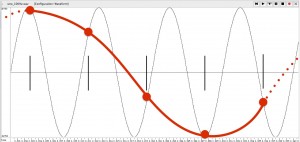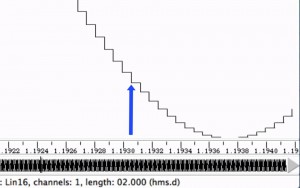The bitrate (or bit rate) of a signal is the number of bits required to store, or transmit, 1 s of that signal. A bit is a binary number: either 0 or 1. Let’s calculate the bitrate of a digital waveform. First you should revise the concepts of sampling and quantisation from this module of the […]
Digital signal
To do speech processing with a computer, we need to convert sound first to an analogue electrical signal, and then to a digital representation of that signal.
Aliasing
In sampling and quantisation we saw that sampling a signal at a fixed rate means that there is an upper limit on the frequencies that can be represented. This limit is called the Nyquist frequency. Before sampling a signal, we must remove all energy above the Nyquist frequency, and here we will see what would […]
Sampling and quantisation
Is digital better than analogue? Here we discover that there are limitations when storing waveforms digitally. We learn that the consequence of sampling at a fixed rate is an upper limit on the frequencies that can be represented, called the Nyquist frequency. In addition to the limitations of sampling, storing each sample of the waveform as a […]




 This is the new version. Still under construction.
This is the new version. Still under construction.